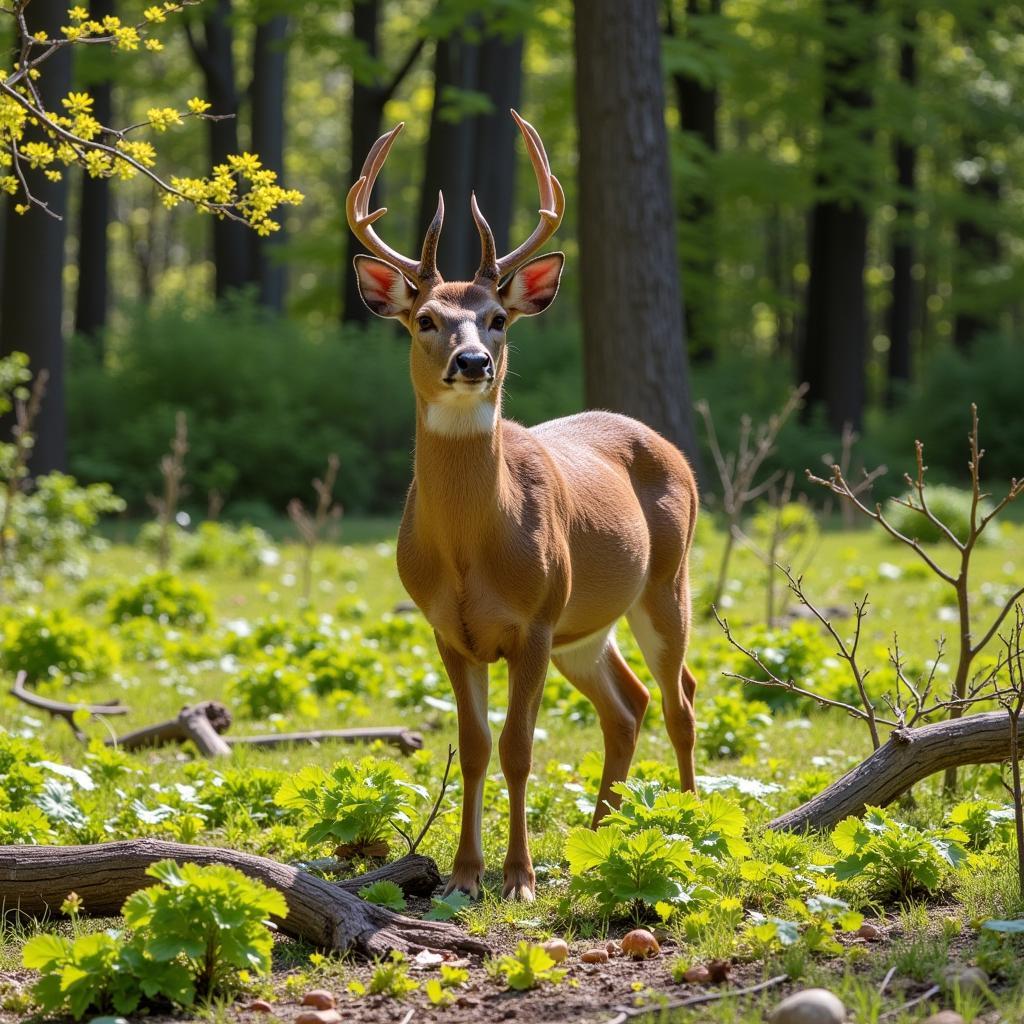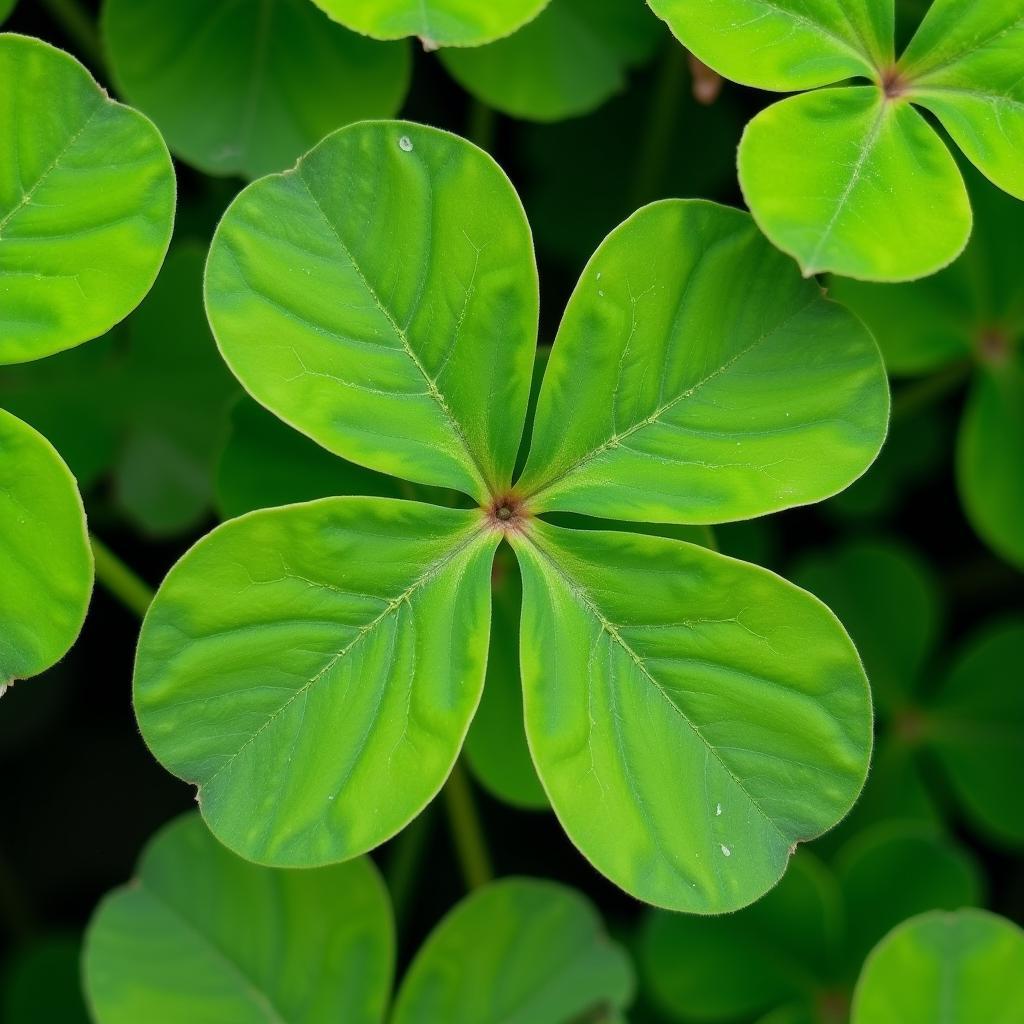Spring is in the air, which means it’s time to start thinking about your food plot strategy for attracting deer to your property. Choosing the right Food Plot Seed For Spring planting is crucial for creating a thriving food source that will entice deer throughout the year. Whether you’re a seasoned hunter or just starting, this guide will provide you with everything you need to know about selecting the best food plot seed for spring, maximizing your chances of a successful hunting season.
 Deer grazing in a lush spring food plot
Deer grazing in a lush spring food plot
Understanding Deer Nutritional Needs in Spring
As winter fades and spring emerges, deer transition from surviving on limited browse to seeking out nutrient-rich vegetation to support their energy needs for fawning and antler growth. Spring food plots should focus on providing protein, minerals, and digestible energy.
Key Nutrients for Spring Food Plots:
- Protein: Crucial for antler growth in bucks and fawn development in does. Look for seeds with high protein content like clover, alfalfa, and chicory.
- Energy: Deer need readily available energy sources after a long winter. Grains like oats and wheat, along with brassicas, provide excellent energy.
- Minerals: Soil quality often lacks essential minerals. Consider incorporating mineral-rich plants like chicory or using a mineral supplement.
Best Food Plot Seed Options for Spring Planting
Selecting the right seed blend is vital for attracting deer to your food plot. Here are some top choices:
1. Clover and Chicory Mixes:
A classic choice, clover and chicory mixes offer a long-lasting food source with high protein and attractive properties that deer love.
- Benefits: Highly palatable, drought-tolerant, and provide excellent nutrition throughout spring and summer.
- Varieties: Red clover, white clover, ladino clover, and chicory are popular options.
 Close up of clover and chicory
Close up of clover and chicory
2. Brassicas and Turnips:
Brassicas, including turnips, radishes, and rape, are fast-growing, cold-tolerant options for early spring planting.
- Benefits: Provide a quick burst of energy and nutrients. Their leafy greens and bulbs are highly attractive to deer.
- Tips: Plant in late summer or early fall for a late fall and early winter food source as well.
3. Grain-Based Plots:
Planting grains like oats, wheat, or ryegrass in early spring can offer a quick source of energy and attraction.
- Benefits: Fast-growing and highly palatable.
- Consideration: Grain-based plots tend to be short-lived compared to clover or chicory.
Planting and Maintaining Your Spring Food Plot
A well-prepared seedbed is crucial for a successful food plot. Follow these steps:
- Soil Test: Analyze your soil to determine the pH and nutrient levels. Amend the soil based on the results.
- Weed Control: Eliminate existing weeds through tilling, herbicides, or a combination of methods.
- Seeding: Follow the recommended seeding rates on your chosen seed mix.
- Fertilization: Use a balanced fertilizer to promote healthy growth.
- Maintenance: Monitor your plot regularly for weeds, pests, and diseases.
Late Season Food Plots for Year-Round Attraction
Don’t limit your food plot planning to spring. Consider establishing a late season food plot with options like:
- Winter Rye: A cold-hardy grain that provides sustenance throughout the winter months. You can find more information about this on our late season food plot guide.
- Brassicas: Certain brassica varieties, like turnips, can withstand colder temperatures and offer late-season forage.
By creating a year-round food source, you’ll increase the chances of seeing deer on your property throughout the hunting season and beyond. If you’re in Michigan, our guide on michigan food plot planting dates can help you pinpoint the ideal planting times for various species.
Choosing the Right Seed for Your Region
The success of your food plot depends heavily on selecting seed varieties adapted to your local climate and soil conditions.
- Consult Local Experts: Your local agricultural extension office or experienced hunters can offer valuable insights into the best seed options for your region.
- Consider Elevation and Climate: Higher altitudes may require different seed varieties than lower elevations.
By understanding your region’s specific growing conditions, you can create a food plot that thrives and attracts deer.
Food Plot Tips for Success
- Start Small: If you’re new to food plots, begin with a small area that you can manage effectively.
- Location Matters: Choose a location with adequate sunlight and water drainage. Avoid areas with heavy deer browsing pressure, as it can hinder the plot’s establishment.
- Diversity is Key: Plant a variety of species to provide a wider range of nutrients and attract deer throughout different seasons. You can explore options for a best year round deer food plot in our comprehensive guide.
- Observe and Adapt: Pay attention to how deer use your food plot. Adjust your planting strategies in subsequent seasons based on your observations.
Conclusion
Selecting the right food plot seed for spring is essential for attracting deer and enhancing their nutrition. By understanding the nutritional needs of deer, choosing suitable seed varieties, and implementing proper planting and maintenance techniques, you can create a thriving food plot that attracts deer throughout the year. Remember to consult local experts, observe your plot’s performance, and adapt your strategies to maximize your success. With careful planning and execution, your spring food plot will become a magnet for deer, leading to a rewarding hunting experience. Need more information on deer-attracting plants? Check out our article on chicory for deer food plots.
FAQs about Food Plot Seed for Spring
1. When should I plant my spring food plot?
The ideal planting time varies depending on your location and the specific seed species. Generally, early spring, as soon as the ground can be worked, is a good time for many food plot seeds.
2. How big should my food plot be?
The size of your food plot depends on your property size and your goals. It’s generally recommended to start with a smaller plot (1/2 acre to 1 acre) and gradually increase the size as needed.
3. What if my soil is poor quality?
Conducting a soil test is crucial. Amend your soil based on the results, adding lime to raise pH or fertilizer to address nutrient deficiencies.
4. How can I keep deer from overgrazing my plot?
Consider using rotational grazing techniques or planting a larger plot to distribute browsing pressure.
5. Can I plant food plots for other wildlife?
Yes! Many food plot seeds, such as clover, also benefit other wildlife like turkeys and rabbits. Consider exploring options for outdoor bird food to enhance the biodiversity of your property.
For any assistance regarding food plot seeds and other inquiries, please contact us at:
Phone Number: 02437655121
Email: minacones@gmail.com
Address: 3PGH+8R9, ĐT70A, thôn Trung, Bắc Từ Liêm, Hà Nội, Việt Nam.
Our dedicated customer support team is available 24/7 to assist you.